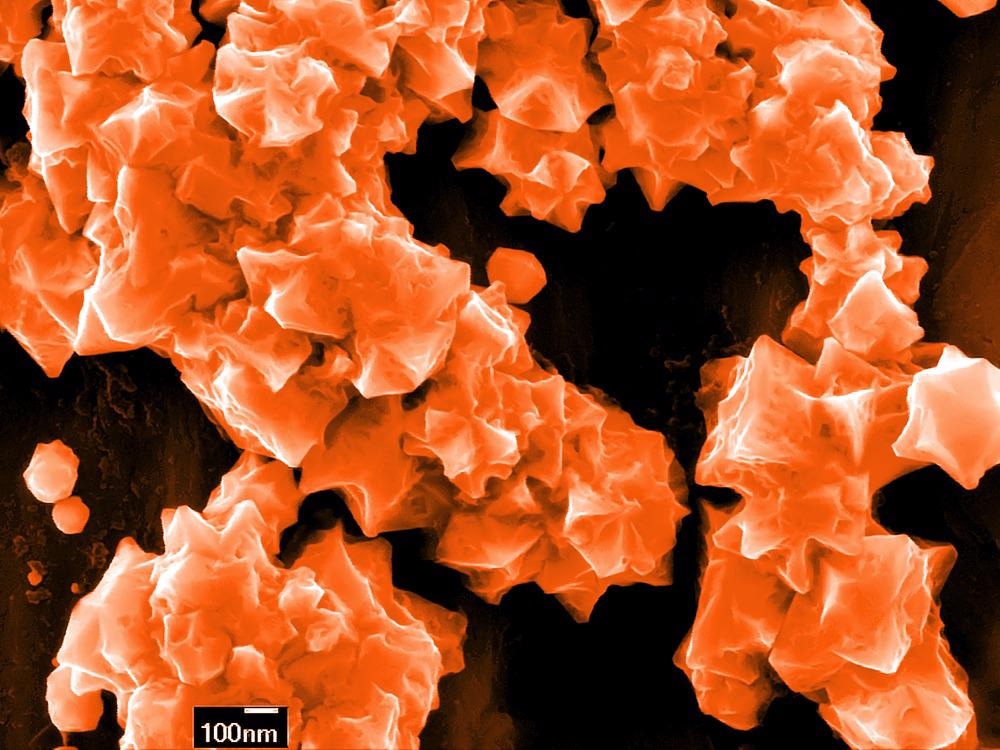A focus review has been published in the journal ACS Energy Letters surveying current progress in the post-synthesis transformation of perovskite nanocrystals.

Study: Postsynthesis Transformation of Halide Perovskite Nanocrystals. Image Credit: Georgy Shafeev/Shutterstock.com
Perovskite Nanocrystals
Metal halide perovskite nanocrystals possess tunable band gaps, tunable photoluminescence over the entire visual spectrum, and enhanced photoluminescence quantum yields. They have found applications in several state-of-the-art technologies such as photovoltaics, fuel cells, solar concentrators, LEDs, and photocatalysts.
Synthesis of these materials is a well-explored topic of research, with their tunable properties thoroughly categorized in recent research. Amongst the synthesis processes employed to produce perovskites, LARP, hot injection, and template-based synthesis have been widely employed.
These synthesis processes produce shape-controlled nanocrystals in different ways. LARP and hot injection processes involve capping ligands, whilst in template-based protocols, templates are used to control the final nanocrystal shape. Capping ligands passivates surface defects during nanocrystal growth.
The electronic and optical properties of perovskite nanocrystals depend on the ions’ stoichiometric ratios as well as ligand coordination and passivation. Furthermore, how the surface is terminated plays a key role in the final properties of perovskite nanocrystals.
Issues can occur during synthesis which negatively impact the properties and performance of materials, such as reduced stability and the presence of defects on the nanocrystal surfaces. However, post-synthesis methods can be employed to transform crystallographic phases and morphology in perovskite nanocrystals.
Post-synthesis Modification
Several methods can be used to trigger phase and morphological transformations in perovskite nanocrystals after synthesis. Methods that take advantage of physical stimuli like pressure, light, humidity, and temperature can trigger chemical reactions within nanocrystals.
Generally speaking, postsynthesis transformation methods involve removing ligands from perovskites, followed by mergers between particles and reconstruction of crystal phases. These methods have a number of impacts, including affecting quantum confinement and altered electronic properties in nanocrystals.
Postsynthesis modification is a relatively recent field of perovskite research that offers possibilities of further enhancing the properties of perovskite nanocrystals to improve their potential in optoelectronic applications.
The Focus Review
The authors have presented a comprehensive focus review on the current state of research into postsynthesis modification and transformation strategies. So far, reviews have been limited compared to studies on perovskite synthesis and applications.
The new review study has explored several strategies, including physical processes such as heat, pressure, and light. Solvents and ligand treatments have been highlighted in the paper. Several current and future perspectives have been comprehensively explored by the authors.
Regarding synthesis methods, the authors have focused on hot injection and LARP-synthesized nanocrystals. They have stated that this is because these processes use the method of capping ligands to achieve surface passivation, which meets the dynamic requirements of post-synthesis transformation. Moreover, template-based protocols are not suitable as templates need to be removed, complicating the process.
Post-synthesis Transformation Methods
Different types of post-synthesis transformation methods have been evaluated in recent research. These include polar solvent-induced transformation methods and techniques which use chemical treatments such as salts, amines, and acids. There have been several interesting studies performed recently which have sought to evaluate the effects of post-synthesis transformation methods.
Researchers have evaluated several solvents, with one study reporting the spontaneous solvent-assisted coalescence of inorganic mixed halide perovskites. In this research, perovskite nanocubes were transformed into nanowires. Toluene and chloroform were used in this study. Other studies have reported lattice distortion of cubic perovskites using polar solvents.
Other processes involve physical treatment. Researchers have investigated the influence of varying physical parameters such as moisture, illumination, temperature, and oxygen.
These parameters can be varied to promote morphological evolution in perovskite nanocrystals post-synthesis. Regarding light modification, metal halide perovskites and ligands tend to respond well to light, making this a powerful modification method. One study has reported the reversible transformation of nanocrystals using light.
Other studies have reported face-to-face self-assembly of thin perovskite nanosheets into thick nanosheets using pressure. Additionally, research has demonstrated the oxygen and moisture-dependent luminescent degradation and morphological transformation of nanocrystals.
Postsynthetic approaches provide a beneficial alternative to other synthesis methods to transform nanocrystal morphology and crystallographic phases. A key factor that governs postsynthetic transformation of pristine perovskites is the dynamic nature of the coordination between ligands and nanocrystal surfaces. Research is ongoing into new strategies to tune the properties of perovskite nanocrystals.
In Summary
This focus review has provided an in-depth knowledge base for future research into postsynthetic modification of perovskite nanocrystal morphology and crystalline phases. The authors have stated that energy-related applications could benefit greatly from transformed nanocrystals due to their impressive properties.
According to the authors, a deeper understanding of the surface chemistry and ligand binding in transformed perovskite nanocrystals, as well as the dynamics of postsynthesis methods, is crucial for future research and applications. Moreover, the nanocrystal surface termination during transformation needs further research.
More from AZoM: Considering the Behavior of Doped SrTiO3 Ceramics
Further Reading
Paul, S & Acharya, S (2022) Postsynthesis Transformation of Halide Perovskite Nanocrystals ACS Energy Letters 7 pp. 2136-2155 [online] pubs.acs.org. Available at: https://doi.org/10.1021/acsenergylett.2c00888
Disclaimer: The views expressed here are those of the author expressed in their private capacity and do not necessarily represent the views of AZoM.com Limited T/A AZoNetwork the owner and operator of this website. This disclaimer forms part of the Terms and conditions of use of this website.